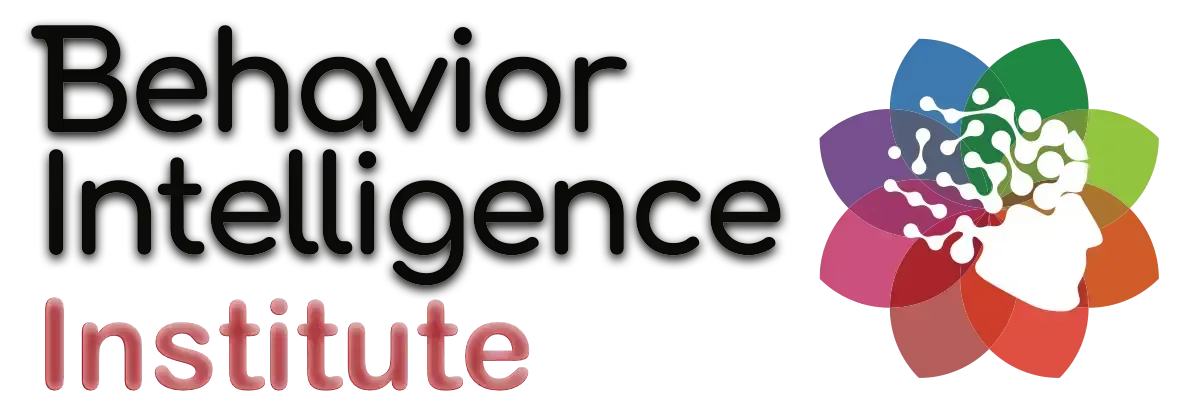Blog
Categories

Delegating to AI: The Silent Erosion of Leadership Muscle
Delegating to AI: The Silent Erosion of Leadership Muscle
Artificial Intelligence is transforming our workplaces at an unprecedented speed. Tasks are automated, meetings are transcribed, summaries are generated, and deadlines are assigned—all without much human intervention. At first glance, it’s a productivity dream. But beneath the surface, a subtle erosion is taking place—one that strikes at the heart of effective leadership.
The question is not whether we should embrace AI—it’s how we can integrate it without losing the essence of leadership: connection, trust, and behavioral intelligence.

The Hidden Danger: Assumptions Replacing Observations
Technology has given us incredible tools. But when leaders start replacing human engagement with AI-generated checklists and dashboards, they risk trading genuine connection for hollow efficiency.
We assume compliance when there’s silence.
We interpret completed tasks as engagement.
We let AI handle feedback loops that require human intuition.
This leads to a dangerous pattern: we stop observing, we stop listening deeply, and we lose the instinct that allows us to sense when something is "off." Leadership becomes mechanical—disconnected from the people it’s meant to serve.

Blind Spot #1: Passive Listening
Many leaders today are unknowingly slipping into passive listening. When AI transcribes meetings and summarizes conversations, it tempts us to check out.
Team members assign AI to attend meetings on their behalf.
Leaders assume reading transcripts is equivalent to real engagement.
The opportunity for spontaneous insight and emotional nuance is lost.
True leadership demands presence—not just physical, but mental and emotional. Without it, you can’t build the trust necessary for a thriving team.
Blind Spot #2: The Leadership Checklist Illusion
On paper, everything may seem fine. Tasks are marked complete. Deadlines appear met. But when teams quietly struggle, disengagement festers.
Trust erodes when communication becomes transactional.
Leaders miss the subtle cues: hesitation, low energy, unspoken concerns.
The absence of problems does not mean the absence of issues.
Leadership is not merely managing a ship—it’s guiding the crew. And guiding people requires observation, conversation, and emotional resonance.
Blind Spot #3: The Feedback Blackout
AI can’t feel hesitation. It can’t sense tension. It can’t probe beneath the surface when a team member says, “I’m fine.”
Employees stop asking questions.
Creativity and curiosity diminish.
The “chicken pen” effect returns—workers isolated in their tasks, disengaged from one another.
Feedback loops die when leaders fail to actively seek them out. AI can log the data, but it takes a leader to ask, “What’s really going on?”
AI Is Not Behavior Intelligence
AI excels at processing information—it cannot replicate intuition, intent, or empathy.
AI can see what was done; it can’t sense why it was done.
AI lacks the ability to build trust through relationship.
AI cannot recognize the crackle in a voice, the glance of hesitation, or the subtle withdrawal of energy.
Leadership is as much about what is unsaid as what is said. It’s about listening between the lines and picking up on the cues that algorithms overlook.

Leadership Intelligence: ALO — Ask, Listen, Observe
In today’s AI-driven world, leaders need to strengthen their behavioral intelligence more than ever. I call it ALO:
1. Ask
Invite people to share openly.
Build trust by showing curiosity.
Ask questions that probe beneath surface compliance.
2. Listen
Resist the urge to interrupt.
Repeat back what you hear to confirm understanding.
Pay attention to tone, word choice, and energy.
3. Observe
Watch for non-verbal cues: posture, facial expressions, the quiet participant.
Notice who hesitates before agreeing.
Sense the emotional state behind task performance.
By practicing ALO consistently, leaders create environments where issues surface early—before they turn into crises.
You Can’t Outsource Presence
AI will never replace the need for presence. Trust is built through human connection, not automation. Silence is not consent. No communication is itself a form of communication—and it demands inquiry.
Schedule regular sensing moments in meetings.
Begin and end with personal check-ins.
Notice who isn’t speaking and create space for them.
Ask, “How are you really doing?”
These small but powerful habits reinforce a culture of trust and engagement that AI alone can’t sustain.
Don’t Abdicate—Integrate
The solution is not to reject AI—it’s to integrate it wisely.
Use AI to handle repetitive, mundane tasks.
Free your team to focus on creative, collaborative, high-value work.
Layer behavioral intelligence on top of AI capability.
AI should augment leadership, not replace it. The danger lies in abdication—relinquishing the critical, human aspects of leadership to a machine incapable of empathy.
Leadership in the AI Era: A Balanced Approach
Performance issues are rarely technical. They’re rooted in relationships.
Efficiency must not replace empathy. Both are essential.
Silence is never a sign of everything being fine. Probe, question, and observe.
Striking the right balance may mean 80% automation and 20% high-touch leadership—or vice versa, depending on the context. What matters is that leaders remain deeply engaged.

The Path Forward: Strengthen Your Leadership Muscle
AI is here to stay. But your leadership muscle will atrophy if you delegate away the human elements that make leadership effective.
Stay curious. Stay present. Stay connected.
If you're ready to strengthen your leadership intelligence and integrate AI without losing your human edge, join our community at BIQ.Network. Access free courses, tools, and coaching designed to help leaders thrive in the AI era.
Stay connected. Stay human. Lead with intelligence.
Copyright 2021 AccuMatch Behavior Intelligence is a division of NLP Profiles Inc. | Privacy Policy



